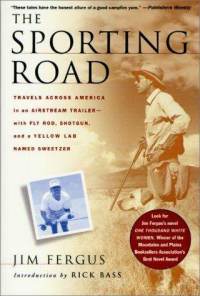Samoon and Tandoori Bread
A few times a month, I frequent Diyar International Market in Denver, Colorado to get some steaming breads from its Middle-eastern shaped ovens. These samoon are usually scooped up as fast as they come out, five loaves cost less than $2. There samoons are pizza-shaped dough which is slapped onto the oven wall. They are also baking tandoori breads which are produced from circular dough and baked in the clay oven. The proprietors are from northern Persia. Their butcher section is stocked with fresh halal meat, butchered weekly from local goat, chicken, lamb and beef carcasses. It is the freshest and best looking meat selection of any Middle-Eastern market in Denver. Diyar International Market, 2159 S. Parker Road; 303-337-6527 Another worth a visit is Haji Baba Bakery, 5708 E. Colfax Ave. for pita bread baked here but it is sold at other Middle Eastern grocery stores throughout Denver, as well as Wild Oats Market. We also like two of the other International Markets along Parker road and Iliff and Evans for hard goods. Pick up some Mediterranean roasted almonds while you are there.


